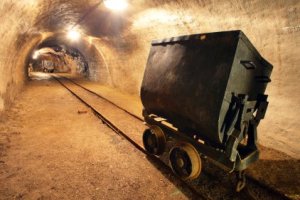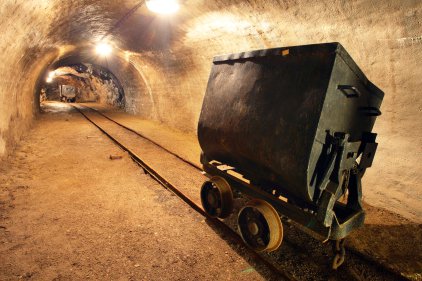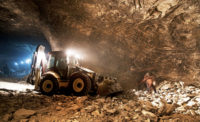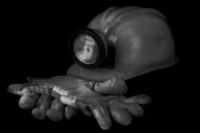 Preliminary data released by the U.S. Department of Labor’s Mine Safety and Health Administration (MSHA) indicates that 40 miners died in work-related accidents at the nation’s mines in 2014, two fewer than in the previous year.* Coal mining deaths dropped from 20 in 2013 to 16 in 2014, the lowest annual number of coal mining deaths ever recorded in the United States. The previous record low was 18 in 2009.
Preliminary data released by the U.S. Department of Labor’s Mine Safety and Health Administration (MSHA) indicates that 40 miners died in work-related accidents at the nation’s mines in 2014, two fewer than in the previous year.* Coal mining deaths dropped from 20 in 2013 to 16 in 2014, the lowest annual number of coal mining deaths ever recorded in the United States. The previous record low was 18 in 2009.
While the numbers of coal mines and miners have recently declined, the number of deaths in 2014 is about half what the industry experienced in the early 2000’s, when the numbers of working coal miners were at comparable levels.
Twenty-four deaths occurred in metal and nonmetal mines last year, an increase from 22 deaths in 2013.
The common causes
The most common causes of mining accidents in 2014 involved powered haulage and machinery; five powered haulage and five machinery related deaths occurred in coal mines, and powered haulage accounted for eight deaths in metal and nonmetal mining. Powered haulage accidents involve equipment used to transport people, materials or supplies, and machinery accidents are associated with the action or motion of machinery or failure of component parts.
During the last quarter of 2014, nine mining deaths occurred, compared to 15 during the same period in 2013. Four of those deaths occurred in coal mines and five in metal and nonmetal mines, compared to six and nine in the previous year, respectively.
Moving mine safety in the right direction
“Mining deaths are preventable, and those that occurred in 2014 are no exception,” said Joseph A. Main, assistant secretary of labor for mine safety and health. “While MSHA and the mining industry have made a number of improvements and have been moving mine safety in the right direction, these deaths, particularly those in the metal and nonmetal industry, makes clear the need to do more to protect our nation’s miners.
“Advancements in health and safety demand the cooperation of the entire mining community,” he added. “Miners deserve the reassurance that they will return home safe and healthy after every shift.”
Ten coal mining deaths occurred underground and six occurred at surface operations. In metal/nonmetal mining, six deaths occurred underground, and 18 occurred at surface operations.
Continuous effort still needed
Main stressed that, to prevent deaths, mine operators must maintain effective safety and health management programs that are constantly evaluated, continue find-and-fix programs to identify and eliminate mine hazards, and provide training for all mining personnel.
Among the measures MSHA has undertaken to prevent mining deaths are increasing surveillance and strategic enforcement through impact inspections at mines with troubling compliance histories; enhancing pattern of violations actions at mines with chronic violation histories; implementing special initiatives, such as “Rules to Live By,” which focuses attention on the most common causes of mining deaths; and engaging in outreach efforts with the mining community. “These actions by MSHA, along with the efforts of the mining industry, are leading to safer and healthier mines,” Main said.
An analysis of mining fatalities, along with best practices for mining operations, is available at www.msha.gov/fatals/summaries/summaries.asp.
“From the Assistant Secretary’s Desk” is available at www.msha.gov/fromthedesk/2015/0105.asp
*Some mining deaths recorded in 2014 are still under review.


